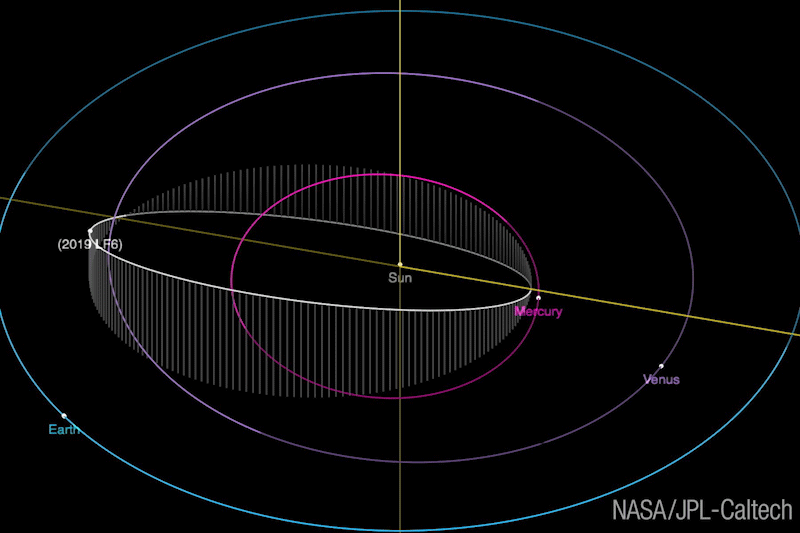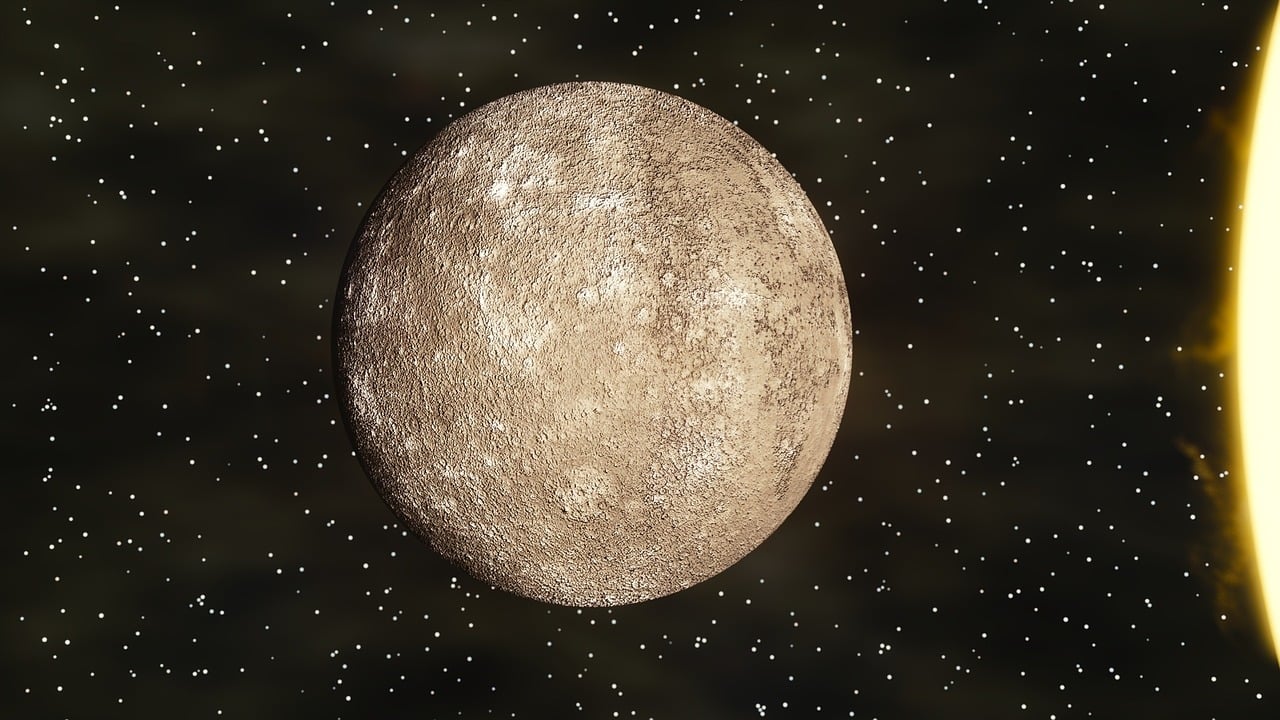Scientists have spotted an asteroid different than any other. It boasts the “shortest year,” compared to any other asteroid. The newly-found asteroid called 2019 LF6 measures 0.62 miles and it takes about 151 days for it to orbit our sun.
The newly-found asteroid swings way beyond Venus and at times during its orbit, it approaches closer to the sun than Mercury, which takes 88 days to complete a full orbit around the sun. The 2019 LF6 asteroid falls into the group of only 20 so-called “Atira” asteroids, known for their orbits that fall entirely within Earth’s orbit.

“You don’t find kilometer-size asteroids very often these days,” Quanzhi Ye, a postdoctoral scholar at Caltech who discovered 2019 LF6 said in a statement.
“Thirty years ago, people started organizing methodical asteroid searches, finding larger objects first, but now that most of them have been found, the bigger ones are rare birds,” he added. “LF6 is very unusual both in orbit and in size—its unique orbit explains why such a large asteroid eluded several decades of careful searches.”
The newly-found asteroid was found using the Zwicky Transient Facility (ZTF) camera at the Palomar Observatory. The camera is used to survey the night skies for transient objects – stars that are exploding or flashing, as well as asteroids on the move. The ZTF camera is extremely fast, which makes it suitable for detecting the hidden Atira asteroids, which have short observing windows.
“We only have about 20 to 30 minutes before sunrise or after sunset to find these asteroids,” Ye said.
The ZTF team conduct a program called “Twilight” for surveying the night sky for Atira asteroids. It was named Twilight after the time of day which is the most recommended time for looking for Atira asteroids.
“Both of the large Atira asteroids that were found by ZTF orbit well outside the plane of the solar system,” Tom Prince professor of Physics at Caltech and a senior research scientist at JPL said. “This suggests that sometime in the past they were flung out of the plane of the solar system because they came too close to Venus or Mercury,”
The ZTF also discovered around 100 near-Earth asteroids, as well as 2,000 asteroids that orbit the Asteroid Belt between Mars and Jupiter.
According to Ye, the Twilight campaign will likely lead to new Atira asteroid discoveries, such as the newly-found asteroid that orbits closer than Mercury. Ye is also hopeful for the possible selection for NASA’s Near-Earth Object Camera (NEOCam) mission, which would see a special spacecraft designed to search for space rocks closer to the sun compared to the previous surveys. NASA’s NEOCam would be looking for infrared and heat signatures of asteroids.
“Because Atira asteroids are closer to the sun and warmer than other asteroids, they are brighter in the infrared,” George Helou the executive director of IPAC, an astronomy center at Caltech said. “NEOCam has the double advantage of its location in space and its infrared capability to find these asteroids more easily than telescopes working at visible wavelengths from the ground.”





